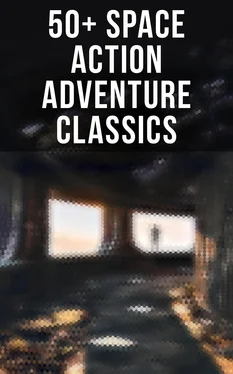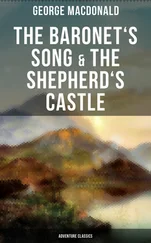Instead of living in great complete houses and dining at home, people lived in smaller houses or flats and dined in collective dining-rooms or restaurants. They gave up having country houses of their own and travelled freely and variously, evoking a vast industry of hotels and hired villas. They travelled lighter — in comparison with preceding centuries, that is. As retail trade organized itself upon big-business lines, the need for the private storage of gear diminished. People bought things when they wanted them, because now they could do so. The big “stores” of the early twentieth century carried an enormous and greatly varied stock.
In the days of Shakespeare new clothes, new furniture, new houses, new things of all sorts were infrequent; in the early twentieth century there were already intimations of the general fresh newness of our own times. The facilities for scrapping were still poorly developed, and there was much congestion and endless litter about, but renewal and replacement for those who had purchasing power were already well developed. If it had not been for the social catastrophe due to ignorance, individualism, monetary deflation and nationalism that overwhelmed that phase of civilization, the distributing organization of the world might very probably have developed straight on from the system of linked stores as it flourished in America in 1925 to our present conditions. And similarly there was an expansion of hotel life and a belated beginning of portable country houses, clearly foreshadowing our current arrangements.
After the disasters and new beginnings of the middle decades of the twentieth century it was to the patterns of big business at the close of the First Age of Abundance that the direction of the Transport Union recurred. We have told how easily and necessarily that Union became the trading monopoly and finally, as the Air and Sea Control, the actual government of the renascent world. Its counting-houses issuing and receiving its energy notes became the New Banking; its Trading Council became the New Retailing; its Supply Control took over, at last, the productive activities of the world. From the first the new powers were instinct with the idea of mobility. They had no vestiges in their composition of the skimping and saving traditions of the ages of insufficiency. They set about providing as ample and various accommodation for everybody as the ever-increasing production of the planet permitted.
The great distributing stores of the previous age provided the patterns from which the new distribution developed in that age of recovery. Wherever old towns and cities were being reconstructed or new ones appearing about new centres of productive activity the architects of the Air and Sea Control erected their great establishments, at first big and handsome after the old fashion and then more finely planned. At first these stores sold things according to the old method, then gradually in regard to a number of things, to clothing for example, they organized the modern system of exchanging new things for old; the new shoes or garment would be made and fitted to the customer and the old taken away and pulped or otherwise disposed of. Nothing is cobbled nowadays; nothing is patched or repaired. By degrees this method abolished that ancient institution the laundry altogether. That line of fluttering patched and tattered garments so characteristic of old-world village scenery vanished from the earth. New rapid methods of measuring and fitting replaced the tape, scissors and sewing of the old days. In the time of the Hoover Slump men would wear their underclothes for years, having them painfully washed out, dried, ironed and returned weekly, and they would wear their complex outer garments with all the old fastenings, buttons, straps, buckles and so forth, sometimes for many years. They had to be made of dark fabrics with broken patterns to conceal their griminess. The clothing of the Middle Ages was still filthier. Nowadays the average life of our much simpler and brighter outer garments with their convenient zip fastenings is about a week, and such light underclothes as we wear last about three days. We keep no wardrobes of them; the stores are our wardrobes. If the weather changes the stores are ready for us everywhere with wraps or heavier or lighter materials. It must be a remote expedition indeed that needs a change of raiment. We wear less clothing than our ancestors, partly because of our healthier condition, partly because we do not like to hide lovely bodies, but mainly because in the past men wrapped themselves up against every contingency. They wore hats whenever they were not under a roof, socks inside their boots, buttons on their sleeve-cuffs, collars and ties. It seems as though these elaborations became necessary to social prestige because of the general shortage. In an age of scarcity it was a testimonial to one’s worth to be fully clad. In the nineteenth century the well-to-do wore gold watch-chains and gloves, which they carried in their hands in hot weather, as further evidence of substantial means.
Housing again, under the Air and Sea Control, took off from the point where the hotel-flat had left it in 1930. There was never any attempt to resume the building of those small permanent houses which were spread so abundantly over England, for example, after the World War. The first task of the new world control was mainly sanitary. Infection lurked everywhere; four decades of social disorder had made every building a decaying disease-trap for the young that were born into it. The Housing Control rebuilt the housing quarters of the rotten old towns in the form of blocks of dwellings, clean, spacious and convenient, but, to our eyes now, very squat and dull. They went from ten to twelve stories high, and very soundly and honestly made. Everywhere they had water, lighting, heating in the colder climates, and sanitation. The picturesquely clustering rural villages were replaced all over the earth by the same type of concentrated house-block, the style and material varying only so far as conditions of climate required it. The villages were literally swept up into these piles. Even where small private cultivation was still going on, the concentration into these mansions occurred and the peasants bicycled out to their properties. Every block had its crèche, its school, its store and its general meeting-rooms.
As we look back on it this supersession of the single separate unlit, undrained and waterless hut or hovel, cottage or little steading seems to have been a swift business, but in reality it took from 1980 to 2030, much more than half the average lifetime, to spread this new conception of housing over most of the world, and by that time in the more advanced regions the older blocks were already being replaced by more beautiful and convenient creations.
Historical Pictures shows us the whole process. We see the jumbling growths of the early phase of the twentieth century; towering apartment-houses and hotels struggling up, far above the churches, mosques, pagodas and public buildings, out of a dense undergrowth of slums. Then come arrest and decline. The pictures become as full of ruins, sheds and makeshift buildings as the drawings of Albrecht Dürer. Amidst these appear air-raid shelters with their beetling covers, first-aid pillars with their chequered markings, and anti-aircraft forts. Further ruin ensues and we see life disorganized by the Great Plague.
Then suddenly these stout, squat, virtuous new blocks thrust into the scene and the battered past vanishes. A new Age has begun. The towns grow larger, finer and more varied. The housing blocks are grouped with the expanding stores, public clubs and hotels in parks and gardens near to the aerodrome, and convenient for whatever industry gives the agglomeration its importance. The public club became prominent after C.E. 2000, both architecturally and socially. That again was the revival of two old ideas; it was a combination of the idea of the English or American club with the idea of the Baths to which the Roman citizens resorted. Here from the start were grouped the gymnastic and sports halls, dancing-floors, conference rooms, the perpetual news cinema, libraries, reading-rooms, small studies, studios and social centres of the reviving social life.
Читать дальше











